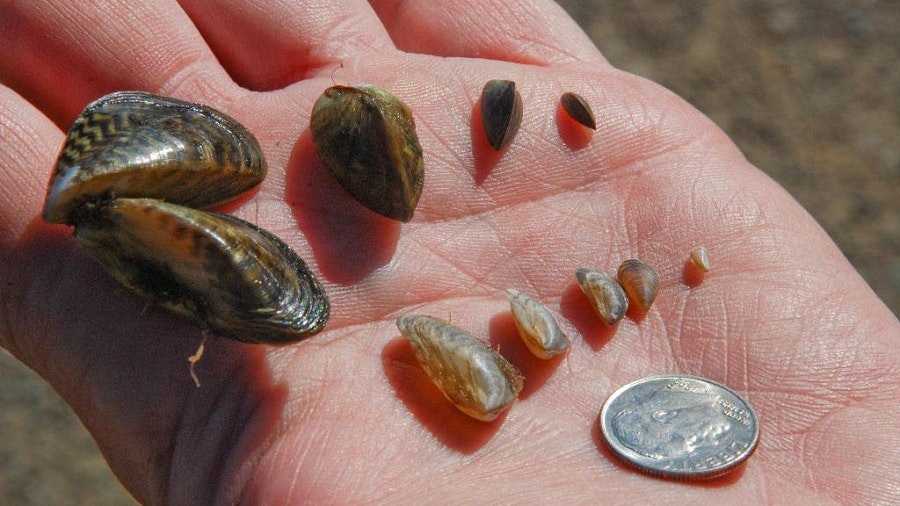A Call to All Boaters: Help NID Protect Local Reservoirs from Invasive Aquatic Mussels
(Grass Valley – Aug. 6, 2024) With boating season in high gear, efforts continue to protect local reservoirs from aquatic invasive species. Nevada Irrigation District (NID) continues to monitor local reservoirs for invasive aquatic mussels with monthly sampling and public outreach.
NID is asking all boaters to commit to the self-inspection of their boats before and after each launch to prevent the spread of invasive aquatic mussels.

NID is working to keep quagga and zebra mussels out of its reservoirs through boater education and a self-inspection program, as well as monthly monitoring at Scotts Flat, Rollins, Combie and Deer Creek Diversion reservoirs.
As of 2023, an additional 10 lakes have been added to the prevention and monitoring program for a total of 13 reservoirs. These reservoirs include Jackson Meadows Reservoir, Milton Diversion Reservoir, Jackson Lake Reservoir, French Lake Reservoir, Faucherie Reservoir, Sawmill Reservoir, Bowman Reservoir, Dutch Flat Forebay Reservoir, Dutch Flat Afterbay Reservoir, Rollins Reservoir, Combie Reservoir, Scotts Flat Reservoir, and Deer Creek Diversion Reservoir.
No quagga or zebra mussels have been detected in our reservoirs, according to NID Hydrographer Ashley Vander Meer.

Quagga and zebra mussels are invasive, and quickly colonize and consume the food supply for native species. This can cause a shift in the natural population of plants and fish in reservoirs and disrupt the ecology of the aquatic environment. In addition, mussels attach to submerged surfaces and can clog water system infrastructure, threatening the water supply for homes, agricultural irrigation and power plant operations, such as those owned and operated by NID.
Since their accidental introduction into North America's Great Lakes in the late 1980s, quagga and zebra mussels have spread rapidly throughout much of the continent. Quagga and zebra mussels are now found in numerous bodies of water across the United States. Since 2016, quagga and zebra mussels have been observed in multiple counties in Southern California such as San Diego County, Los Angeles County, Ventura County and Riverside County. Additionally, they have been observed in Nevada and Arizona since 2007, specifically in the lower Colorado River NV, as well as in Lake Mead NV, Lake Mohave NV, Lake Powell/Glen Canyon National Recreation Area AZ.
Quagga and zebra mussels are often introduced to reservoirs through human-related activities – especially on boats. Per California law, knowingly transporting aquatic invasive species into any reservoir is illegal, and violators are subject to fines. If the detection of the quagga or zebra mussel occurs in our reservoirs, it could lead to closures of public access. California Department of Fish and Wildlife requires any water authority that owns or manages a reservoir open for public recreation to develop and implement a prevention program that includes early detection monitoring, recreational activities management, and public education.
It is essential for boaters to stay informed about the quagga and zebra mussels’ current locations and be diligent in helping prevent the spread. Quagga and zebra mussels are highly invasive mussels that can be easily transported on boats or by simply floating downstream contaminating multiple watersheds.
Mussels can survive out of water for 5 days in warm temperatures and up to 30 days in cool moist climates. NID has developed a boater self-inspection program and sustains a public education at Rollins, Scotts Flat, Combie, Deer Creek Diversion, Bowman, Jackson Meadows, Milton, Sawmill, Faucherie and Dutch Flat Afterbay reservoirs in which boaters must inspect their motorized watercraft and trailers prior to launching and again when they pull their boats from the water. By following these guidelines, boaters play a vital role in preserving the health and biodiversity of our lakes and rivers.
“Clean, Drain, Dry” is the message. Boaters are requested to inspect their boat and trailer before launching and leaving and to:

- Clean - all plants and debris off your boat
- Drain - your motor and bilge water
- Dry - your boat and trailer
“We are grateful to the public for their efforts in protecting our local reservoirs from these invasive species, which could wreak havoc on our environment and create expensive damage to the water system if they take hold in our waterways,” said NID’s Environmental Resources Administrator Neysa King. “The mussels can travel on boats, trailers, and any debris or captured water from reservoirs and lakes and if introduced, are nearly impossible to eradicate and have lasting impacts, sometimes leading to closures of public access.”
NID is currently benefiting from funding provided by a California State Parks Division of Boating and Waterways Quagga and Zebra Mussel Infestation Prevention grant to assist with these invasive mussel prevention efforts.

For more information, https://www.nidwater.com/quagga-and-zebra-mussel-prevention-and-monitoring-program
